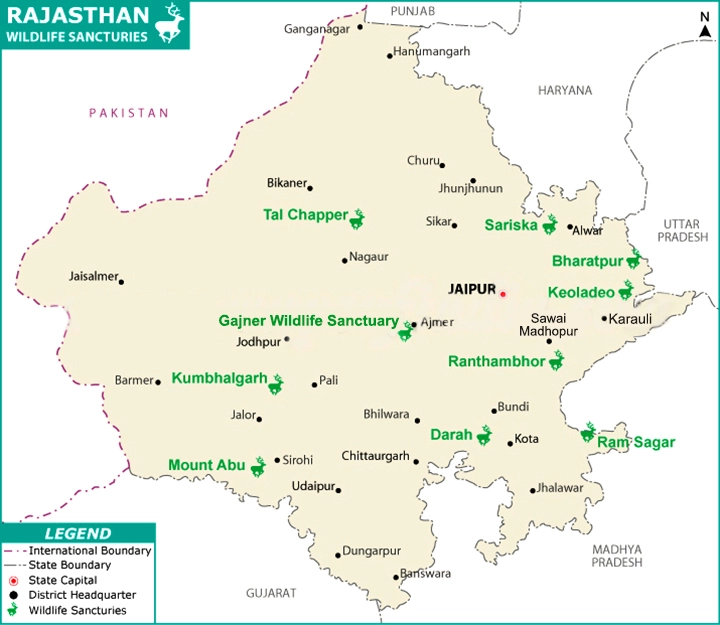Sariska Tiger Reserve | 11 Jul 2025
The Standing Committee of the National Board for Wildlife (SC-NBWL), chaired by the Union Environment Minister, has approved the proposal to redraw the boundaries of the Sariska Tiger Reserve’s (STR) Critical Tiger Habitat (CTH), with the Supreme Court's final nod awaited.
- The Supreme Court is suo motu examining several issues related to the STR, including the rationalisation of its boundaries. Its Central Empowered Committee (CEC) has recommended changes to address human disturbances such as village relocations and cattle grazing.
- Proposed Changes: The rationalisation will result in the CTH expanding from 881.11 sq km to 924.49 sq km, while the buffer zone will reduce from 245.72 sq km to 203.2 sq km, balancing conservation needs with developmental pressures.
- Ecological and Legal Context: CTH is protected under the Wildlife Protection Act, 1972 and must be kept free of human interference.
- The re-demarcation may benefit over 50 mining operations shut down due to proximity to tiger habitat.
- Sariska Tiger Reserve: The Sariska Tiger Reserve, located in Rajasthan’s Alwar district within the Aravalli hills, was declared a wildlife sanctuary in 1955 and became a tiger reserve in 1978 under Project Tiger.
- Known for its rich history, it houses the Kankarwadi Fort, where Aurangzeb imprisoned Dara Shikoh, and the Pandupole Hanuman temple linked to the Pandavas.
- The landscape is marked by rocky terrain, grasslands, scrub-thorn forests, and semi-deciduous woodlands. Vegetation includes dhok, salar, kadaya, ber, gugal, and bamboo.
- The reserve supports diverse fauna including Royal Bengal tigers, leopards, sambhar, nilgai, wild boars, and hyenas.
- Sariska Tiger Reserve also surrounds the sites like Jai Samand Lake and the Siliserh Lake.
| Read more: Sariska Tiger Reserve |

